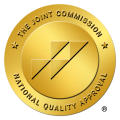Understanding How Cultural Differences Affect Addiction Treatment
Diversity in Addiction
Approximately one-third of the population of the United States belongs to an ethnic or racial minority group. Culture is a vital component of substance abuse treatment because the experiences people have related to their specific cultural heritage influence their clinical experience.1
Treatment settings, home-based social supports, coping mechanisms, and the stigma attached to substance use disorder are all affected by a patient’s culture. Consequently, treatment providers need to understand culture as a broad concept, including an individual’s shared beliefs, regardless of how they relate to a treatment provider’s unique set of beliefs.
Statistics on Addiction in Different Cultures
The 2019 National Survey on Drug Use and Health provides addiction statistics for various cultural demographics. It is vital to note that addiction is a disease that knows no boundaries. It is not concerned with cultural heritage, race, religion, age, economics, or any other factor that often delineates one group from another in societal settings. Addiction can and does impact anyone at any time.2
As with much of the U.S. population, the most common addictions that affect certain ethnicities include prescription opioids, illicit drugs such as heroin and cocaine, and marijuana. Tobacco and alcohol are also significant contributors to elevated addiction statistics across some cultural communities.
Data from the 2019 survey indicates as many as 10.2% of American Indian & Alaskan Natives meet the diagnostic criteria for a substance use disorder. African Americans follow this demographic at 7.6%. Approximately 5% of Asians/Native Hawaiians and other Pacific islanders and Hispanics, Latinos, and other groups of Spanish descent struggle with a substance use disorder.2
Signs and Symptoms of Addiction
Addiction is a disease that impacts everyone in unique ways. Although signs and symptoms of drug or alcohol addiction may differ from person to person, there are common indicators. Symptoms of drug or alcohol addiction are often behavioral, physical, and psychological.
Symptoms of Alcohol Addiction
The most common symptoms of alcohol abuse and alcohol addiction include behavioral symptoms including:
- Obsessing over getting and consuming alcohol
- Loss of control over how much one drinks
- Denial of their addiction
- Hiding how much or how often they drink
- Other behavioral changes such as new or worsening financial troubles, legal problems, and relationship difficulties
Physical signs of alcohol addiction can include weight loss, stomach or digestive issues, and new or worsening medical problems such as cancers and liver problems.
Symptoms of Prescription Opioid Addiction
Like alcohol addiction, opioid abuse and addiction are also characterized by various physical, behavioral, and psychological symptoms. When someone is physically dependent on opioids, they will often be acutely focused on obtaining and using opioid drugs. If they cannot use, they will experience withdrawal symptoms such as cravings and sweating even after a short period of abstinence.
Someone struggling with an opioid use disorder will often exhibit various symptoms, including:
- Uncontrollable cravings
- Changes in sleeping patterns
- Weight loss
- Changes in personal hygiene
- Isolation from family and friends
- New or worsening legal and financial problems
- Changes to their relationships and social circles
Ongoing opioid abuse can also lead to new or worsening mental health conditions, including depression and various anxiety disorders.
Symptoms of Illegal Drug Addiction (Heroin, Cocaine, Meth)
Illegal drugs often fall into several categories, including hallucinogens, stimulants, and depressants. The signs and symptoms someone may exhibit when addicted to these drugs will depend on the type of drug they use. Stimulant drugs such as methamphetamine and cocaine will induce feelings of euphoria, hyperactivity, and excitability.
In addition, these drugs can also cause:
- Irritability
- Anxiety
- Depression
- Changes to sleeping and eating patterns
- Weight changes
- Dilated pupils
Conversely, depressants such as heroin and other tranquilizers can lead to:
- Increased sleeping
- Sweating
- Appetite loss
- Constricted pupils
- Slurred speech
- Difficulties concentrating
Someone who struggles with a heroin addiction may also exhibit signs and symptoms specific to heroin use, such as needle marks in various places on their body.
All illegal drugs, whether depressants, hallucinogens, or stimulants, can lead to new or worsening mental health conditions requiring specific dual diagnosis treatment at a specialized treatment facility where mental health and addiction treatment are addressed in one comprehensive, evidence-based treatment program.
What Is Cultural Competence?

Cultural competence is the ability of treatment centers to provide addiction treatment to patients with diverse beliefs, behaviors, and values. Cultural competence in treatment is essential.
Data from various reports indicate providing culturally specific treatment services improves treatment access, utilization, and outcomes. Cultural competence in the addiction treatment community is also vital to enhancing feelings of comfort, support, and structure in the treatment environment.3
How Does Culture Affect Addiction Treatment?
Each patient seeking treatment is a unique individual regardless of cultural background. Treatment providers must clearly understand how cultural background affects addiction treatment. Factors such as faith, family, language, and traditions impact how people access and utilize treatment services.
Faith
Faith and spiritual beliefs are central to many different cultural groups. Treatment facilities and providers need to recognize how faith, ceremonial beliefs, and culturally specific traditions affect one’s focus on treatment.
To enhance successful outcomes, treatment centers should consider how rituals, spiritual customs, and traditions can be integrated into treatment programs to improve the acceptance and relevance of treatment models.
Focus on Family
Many cultures believe one’s identity is tied to the collective good of the group. For example, some Native American and Asian-American cultures may be more concerned about how their substance use disorder harms their family dynamic than how they are impacted as individuals. Including extended and immediate family in the treatment program may improve participation and improve overall outcomes.
Language
Another crucial consideration is language and language barriers among various demographics. Addiction treatment centers serving diverse populations must provide multi-lingual treatment options. If clients feel they cannot successfully communicate or cannot understand the information provided during treatment, their time in addiction therapy is likely to be uncomfortable and unsuccessful.How Can a Treatment Facility Be Culturally Competent?
For treatment centers to ensure cultural competence and cultural sensitivity, it is essential for staff to understand their patients.
Diverse Staff
It is important for staff to be aware of the client’s first language and for the facility to provide (if necessary) an option for treatment services in that language. Additionally, facilities can attempt to hire staff from culturally diverse backgrounds. This will help provide a basis for enhanced cultural sensitivity while providing clients a comfortable treatment environment with staff representative of their cultural heritage and traditions.Individualized Treatment
Because heritage, background, beliefs, and traditions are varied across different demographics, treatment models should be tailored to reflect the client’s individual cultural needs, values, and preferences. This will help ensure an environment of comfort for participants within the treatment program.Cultural Belief
It is also vital for treatment facilities to consider how cultural competence fits into specific aspects of a treatment program. Traditional detox programs and other treatment models may not fit into some cultural belief systems. Some religious or spiritual beliefs may frown upon or restrict the use of certain medications or medical interventions.
Treatment providers should be aware of these restrictions when planning detox services. Some cultures have strict limitations on how the sexes interact. This should be considered when creating treatment programs for women of various cultures as their beliefs and values may not allow for treatment provided by or in the same program as males from the same or other cultural backgrounds.
Therapeutic models should also consider how specific cultural needs and traditions impact treatment participation and success.
Conclusion
A culturally competent addiction treatment center will consider the unique and specific needs of each person seeking treatment. Most importantly, they will remember that each patient is a person who, regardless of their cultural background or ethnicity, seeks help and potentially life-saving treatment. A culturally sensitive staff will ensure each person who enters their program will feel welcome and be provided with the same caring, compassionate, and comprehensive treatment options.




